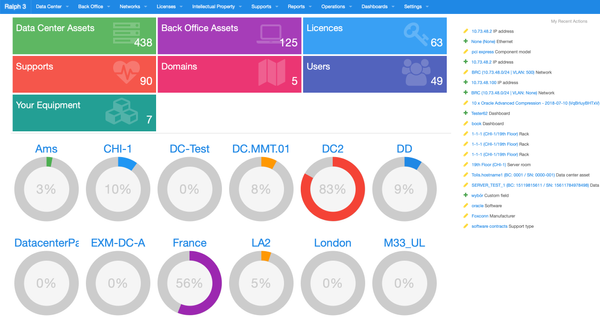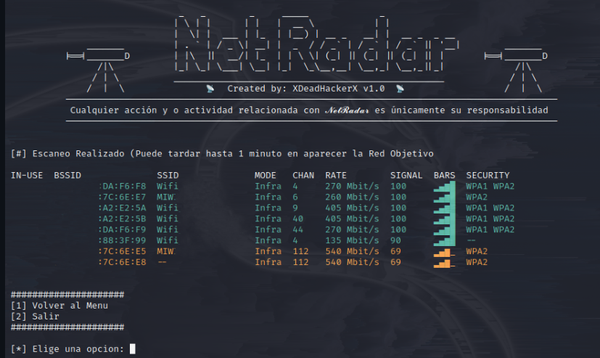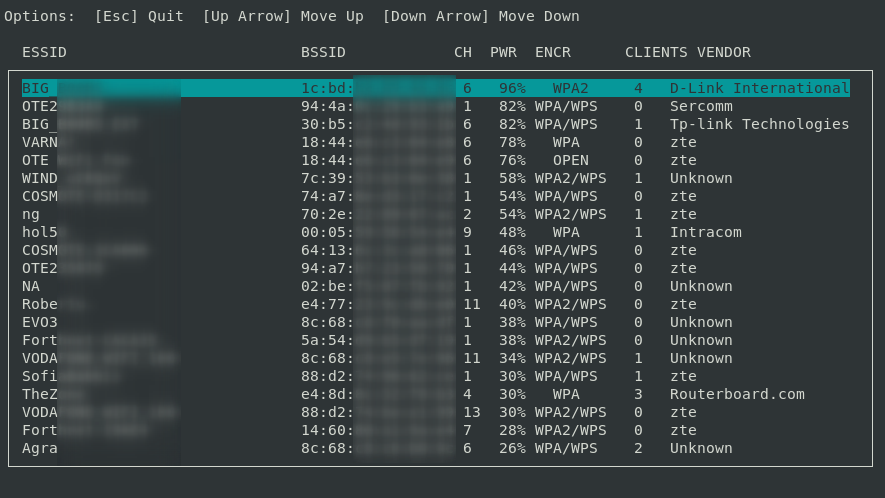The Ultimate Guide To Network Monitoring And Maintenance
In today's digital age, computer networks are the backbone of almost every business and organization. From small startups to large corporations, networks play a crucial role in connecting employees, customers, and systems. However, with this reliance on technology comes the need for network monitoring and maintenance to ensure everything runs smoothly.
In this guide, you'll discover everything you have to know about how to keep your network healthy and functioning at peak performance. You'll also have a better grasp of the various types of network monitoring tools and software available and find tips on how to set them up for your specific network.

What Is Network Monitoring, And What Makes It Important?
First, network monitoring tracks and analyzes network traffic to identify issues and potential threats. It involves using specialized software tools to monitor network devices, applications, and performance metrics while alerting administrators to anomalies or problems.
Network monitoring is crucial because it helps organizations maintain the health and functionality of their computer networks. By monitoring their networks, administrators can identify and resolve issues before they become significant problems that can lead to downtime, lost productivity, and potential security breaches.
Network monitoring also allows organizations to optimize their network performance, detect and prevent cyber-attacks, and ensure that their networks meet performance and compliance standards. If you need comprehensive IT solutions for your business, you can enquire about enterprise IT services from PowerConsulting or other similar businesses.
Now that you are familiar with network monitoring, you can look at the different types available.
The Different Types Of Network Monitoring Tools And Software
Several types of network monitoring tools and software are available, each with its features and benefits.
- Packet Sniffers
A packet sniffer is a type of software that captures and analyzes network traffic at the packet level. They can help identify network performance issues, security breaches, and other anomalies.
- Simple Network Management Protocol (SNMP) Monitoring Tools
SNMP is a communication standard employed for the administration of network devices, encompassing routers, switches, and servers. Tools that utilize SNMP for monitoring can gather performance information from the aforementioned devices and notify system administrators when problems arise.
- NetFlow Analyzers
A NetFlow analyzer is a tool that analyzes network traffic data and provides insights into network performance and usage. They can help identify bandwidth bottlenecks, detect unusual traffic patterns, and provide insight into application usage.
- Application Performance Management (APM) Tools
AMP is a tool that monitors the performance of specific applications and provides insights into their behavior. APM tools can help identify performance issues, track application usage, and optimize resource allocation.
- Intrusion Detection Systems (IDS) And Intrusion Prevention Systems (IPS)
IDS/IPS is a fantastic tool that monitors network traffic for signs of malicious activity and takes action to prevent it. IDS/IPS can help detect and prevent cyber-attacks, including malware infections, denial-of-service attacks, and unauthorized access attempts.
- Unified Threat Management (UTM) Tools
UTM tools are a type of software that combines multiple security tools, including firewalls, intrusion detection and prevention systems, and content filtering. UTM tools provide a comprehensive approach to network security, helping protect against a wide range of threats.
Now that you know the tools and programs available, you may want to consider setting up network monitoring for your business.

How To Set Up Network Monitoring For Your Business
To set up network monitoring for your business, follow these steps, but if you need help setting up, don't hesitate to hire enterprise IT experts for guidance:
1- Determine Your Monitoring Needs
The first step in setting up network monitoring is to identify your monitoring needs. Determine which devices and applications you need to monitor, what data you need to collect, and what alerts you need to receive.
2- Choose Your Monitoring Tools
Once you know what you need to monitor, choose the appropriate monitoring tools. Consider factors such as compatibility with your network infrastructure, ease of use, and cost.
3- Configure Monitoring Tools
After selecting your monitoring tools, configure them to collect the data you need. Set up several alerts and notifications for important events, such as system outages or security breaches.
4- Test The Monitoring System
Once your monitoring system is set up, test it to ensure it works correctly. Ensure you receive alerts and notifications when expected and can access the data you need.
5- Review And Refine
Regularly review your monitoring system to ensure it is meeting your needs. Adjust as needed, such as adding new monitoring devices or modifying alert thresholds. Continuously refining your monitoring system can help you detect and prevent issues before they become significant problems.
Once you are done setting up, you can start enjoying the benefits of network monitoring and maintenance.
Best Practices For Network Monitoring Maintenance
Here are some best practices for network monitoring maintenance.
- Regularly Review And Update Monitoring Configurations
Reviewing and updating your monitoring configurations consistently is crucial to ensure optimal network performance. This includes checking that your monitoring tools are properly calibrated and that they provide relevant alerts.
As your business evolves, so should your monitoring configurations. Consider adjusting thresholds for alerting, adding new metrics to monitor, and removing outdated ones.
- Maintain Comprehensive Documentation
Maintaining thorough documentation of your network configurations, monitoring settings, and troubleshooting procedures are essential for preserving consistency and facilitating issue resolution.
Proper documentation helps your team understand the network's structure, swiftly identify potential problems, and follow standardized procedures when resolving issues. It also enables faster onboarding of new team members and fosters collaboration within the organization.
- Monitor Network Performance
Regularly monitoring network performance metrics, such as bandwidth usage, latency, and packet loss, is essential to identify potential issues before they impact end users.
By proactively detecting performance bottlenecks, you can take corrective action, optimize your network's performance, and enhance the overall user experience.
- Stay Up To Date With Security Patches
Network security is of paramount importance, and keeping your network devices updated with the latest security patches is a critical aspect of maintaining a secure infrastructure.
Regularly updating your devices helps to prevent vulnerabilities that attackers could exploit, ensuring the protection of your organization's data and assets.
- Monitor Network Security
In addition to maintaining updated security patches, it is essential to implement monitoring tools that detect and alert you to potential security breaches. Regularly reviewing security logs can help you identify signs of unauthorized access, malicious activity, or other suspicious events.
By taking prompt action on these alerts, you can mitigate the risk of data breaches and protect your organization's sensitive information.
- Regularly Review And Update Network Policies
Network policies should be regularly reviewed and updated to align with your organization's evolving business needs and security best practices. This may involve modifying access control rules, updating firewall configurations, and re-evaluating user permissions.
Staying current with network policies helps maintain a secure and efficient network environment.
- Establish A Comprehensive Backup And Recovery Strategy
Having a comprehensive backup and recovery strategy in place for your network devices and configurations is vital to minimize downtime and data loss in the event of a catastrophic failure.
This strategy should encompass regular backups, off-site storage, and disaster recovery plans. By implementing a robust backup and recovery strategy, you can ensure the continuity of your organization's operations and safeguard critical data.
Following these practices will give you the best performance from the network monitoring and maintenance system.
Conclusion
Network monitoring is a necessary process that businesses and organizations must undertake to maintain their computer network's health and functionality. The network monitoring tools and software offer many features and benefits that can help organizations detect and prevent issues, optimize network performance, and ensure compliance with standards.
By following the best practices for network monitoring maintenance, organizations can ensure that their networks are protected against potential threats and function optimally. With the right tools and techniques, businesses can avoid potential issues and keep their networks running smoothly.
Author: Sydney Foster
Sydney Foster is a blogger and technology writer. She has been writing about network monitoring and maintenance for several years. Sydney's articles have been featured on various tech blogs and websites. During her free time, she enjoys taking photos and trying out new restaurants.








